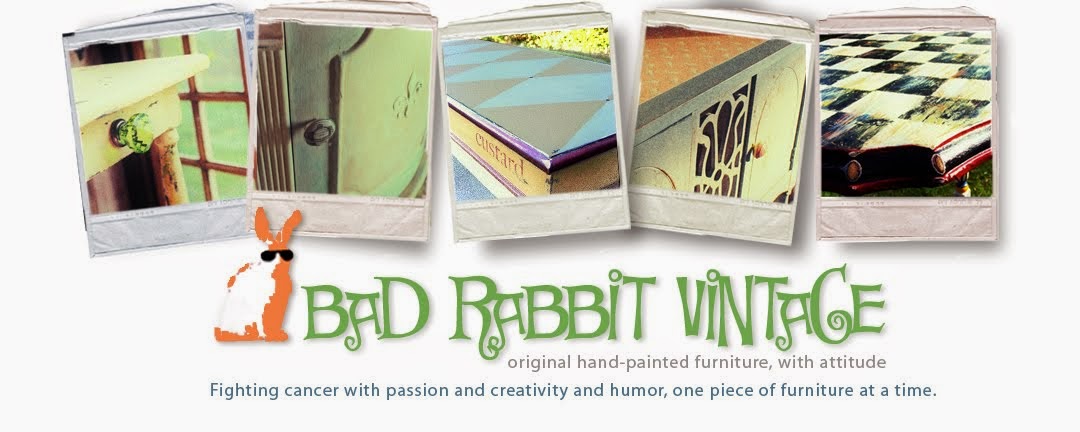Who doesn't like to experiment?
My mind is forever thinking 'What would happen if I doooo ..... THIS?' And if you listen closely you could hear Mr. Bad Rabbit yelling 'Noooo! Wait!'
At a yard sale recently, I found three drug store cabinet windows that would look better painted. :-) And today, since I was home alone, I thought I'd experiment with MMS Milk Paint.
Plus, I had an idea ......
What if I used this mini-mixer I've had for years? It is meant to mix protein drinks but powder is powder, right?

Ready to go
First I put down a coat of acrylic paint just to see what would happen when the Milk Paint went over it.
Then I rubbed random spots to see if it affected the crackling Milk Paint is known for. While that dried I mixed my paint.
The tools
Water and paint, ready for the push of the button.
But the mixer was silent. Batteries. Dang! So I unscrewed the bottom ..... wrong bottom, and milky water came spewing out. Milky water everywhere. Well crap. I tightened up the mixer and turned my eyes to ....
My buddy, the milk shake blender.
So, here we go again.
While the blender mixed happily away, I fought (because I had to do it over my head so I wouldn't spill the remaining paint) new batteries into the mixer. But first I had to use a fork to get those old batteries out, but, well, whatever. So I had this thing over my head with paint seeping out while I gouged at it with a fork. And finally, I got the batteries out. Good grief. Then came pounding the new batteries in. Seriously. After all that, I loosened up the paint at the bottom of the mixer and got it going. I let both appliances whirr away for a bit while I cleaned paint off counters and the floor.
The milk shake blender made a foamy paint any barista would be proud of. The little mixer made lumpy paint which wasn't its fault, because:
a) I added too much water after the boo-boo.
b) I had forgotten that water went in first, then powder.
Otherwise you get cement, like I did.
c) I'd added cold water
Otherwise you get cement, like I did.
c) I'd added cold water
On the left is foam, on the right is the normal paint. I wanted to see if they would dry differently.
As it turned out there was no difference in how the two consistencies of paint dried. So now I waited for the crackling and peeling to start.
All I got was subtle cracking when what I'd hoped for was dramatic peeling.
A few weeks ago I got dramatic peeling when what I had hoped for was subtle cracking.
This is the thing about Milk Paint. It does what it is going to do and not exactly what you might want. You can use a bonding agent to control the cracking but you still never know what the final result will be. It's all part of the fun. Just let your hair down and paint, paint, paint, Baby!
I have two more windows waiting. I wonder how they'll turn out?
Next time I mix paint I think I'll go back to using my tried and true
immersion blender.
















Hi,
ReplyDeleteI want to preface this as saying I've never used milk paint so have no idea how it is supposed to work. You probably already know this: but when using regular paint to get a crackle finish First the colour you want to see through the crackling; next the "whatever" (I use white glue with a bit of water); and last the colour that will show on the outside. Depending on how thick you put the paint on gave you the size of the cracks. Thicker paint = larger cracks. Thinner paint = smaller, more delicate cracks. I've also since cracks like the crazing on old dishes. Also, only paint in one direction - not back and forth.
This may not be the same with milk paint and given your talents you probably already knew all this.
Hope all is well with you,
Cathy